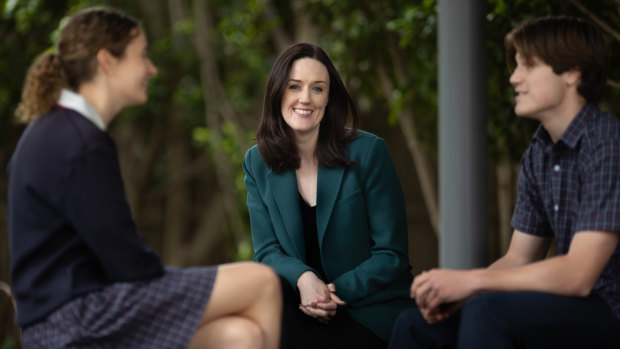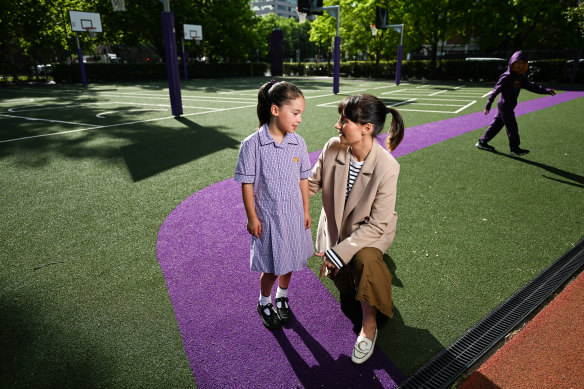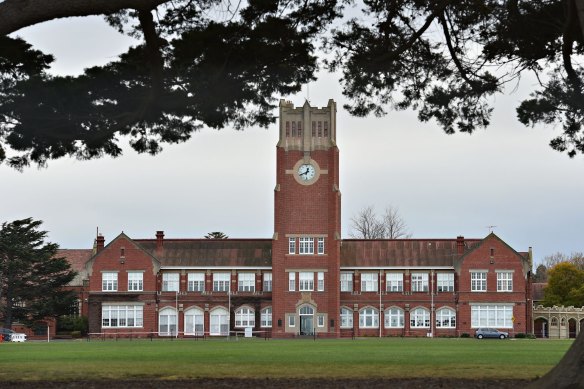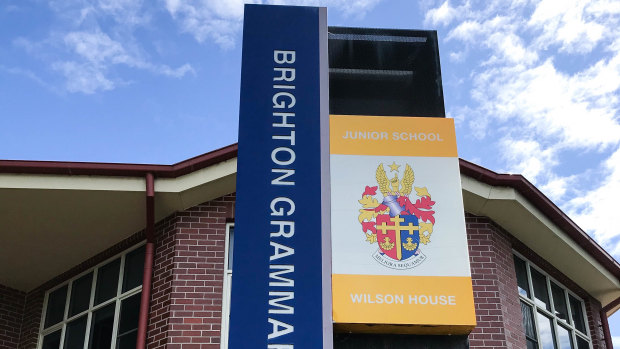Getting a spot as a boy at a high-fee private school has never been tougher, as schools fight over girls, who have a wide choice of schooling options.
There are about 50 private schools with fees exceeding $20,000 in Victoria – seven of them are boys’ schools, 18 are girls’ and the rest are co-educational.

Emma McDonald, deputy head and head of senior school at St Michael’s Grammar School.Credit: Simon Schluter
The lack of boys’ schools creates a cut-throat environment in which co-educational schools must apply for exemptions to the Equal Opportunities Act to discriminate based on gender to maintain a balance, offering girls-only scholarships, easy access to waiting lists, women-focused alumni groups and female-focused advertising.
“As a result, you have this massive imbalance of demand. Girls have so many options that schools have to market and attract them. They don’t need boys because boys are trying to get in,” said Paul O’Shannassy, managing director at Regent Consulting, which provides advice to parents about private schools in Australia.
The imbalance has a flow-on effect on public schools, which are also left struggling to enrol female students, particularly in areas with high numbers of girls-only schools.
Earlier this month, inner-Melbourne private school Wesley College applied for an exemption to the Equal Opportunities Act at the Victorian Civil and Administrative Tribunal so it could discriminate based on gender to maintain a balance of girls and boys.

Kate Evans with her six-year-old daughter Riley, who attends Wesley College.Credit: Joe Armao
The school, which will charge $40,053 a year for senior students next year, was originally a boys’ school but became co-educational in 1978.
St Michael’s Grammar School in St Kilda was granted exemptions to the Act in 2007, 2010 and 2013 and again in 2018, when it outlined that achieving gender equality was a critical issue.
Emma McDonald, deputy head and head of senior school, said the school’s “crucial” exemption lasted until 2024.
“We aim to have a gender balance as close to 50:50 across the school. We consider the balance at both a macro and micro level. If necessary, we will restrict the size of the class to assist in achieving a gender balance,” she said.
McDonald said they received more applications from boys than girls. The waitlist for 2025 and 2026 is around 40 per cent girls and 60 per cent boys.
She said they had strong demand from boys, partially because there were fewer independent boys schools in Melbourne and because parents saw the benefits of a co-educational environment.
Caulfield Grammar School was granted an exemption, set to expire this year, to structure waiting and enrolment lists to target prospective students of either gender.
Geelong Grammar, currently Australia’s most expensive private school, has an exemption in place until 2024.

Geelong Grammar is allowed to structure waiting and enrolment lists to target prospective students of either gender.Credit: Vince Caligiuri
O’Shannassy said girls’ schools were under pressure to maintain enrolments and be innovative in a competitive market. “If you have a boy, you are less fussy, because you have to be,” he said.
He believes one of the reasons more boys’ schools have become co-ed is because of the physical size of the schools, while smaller boutique girls’ schools do not have the space to expand to take on more students.
He said it also meant schools could be selective of their students.
Fintona Girls’ School principal Rachael Falloon said some families are told by schools there would not be a place for their son unless they also enrolled their daughter.
“In the past six years, I am aware of two families who have moved their daughter from Fintona to secure the school of choice for their son,” she said.
The competition at some girls’ schools has been so great, they’ve closed or merged. In 2019, Catholic girls’ school Presentation College Windsor closed due to low enrolments and merged with Christian Brothers College St Kilda to create St Mary’s College. Catholic girls’ school St Aloysius College began enrolling boys in 2023.
Enrolments at all-girls school Genazzano FCJ College in Kew have dropped in the past five years from 1026 girls in 2017 to 768 in 2022.
Shelford Girls’ Grammar in Caulfield has dropped from 504 girls to 447 in 2022. The school is partnering with Caulfield Grammar School.

Demand at Brighton Grammar School continues to exceed supply.Credit: Joe Armao
Brighton Grammar School headmaster Ross Featherston said demand was exceeding supply at their boys’ school. The Brighton school, which caters for 1366 students from early learning to year 12, will charge more than $37,000 for year 12 in 2024.
”Our enrolments have grown by over 25 per cent in the last eight years, which is great, but as we want to maintain our mid-size enrolment number, this growth has led to waitlists.”
Featherston said parents put their son on waitlists for the school as soon as they were born.
Deakin University senior education lecturer Emma Rowe said private and public schools had different playing fields for enrolment processes.
“It’s not the same for public schools because they don’t have the ability to be so selective,” she said.
“Supposedly, we have school choice, where parents feel empowered by their choices, but I think that’s not the case. I think parents feel stressed, constrained, they don’t feel like they have abundant choices,” she said.
“There’s all these different situations where particular students might be less desirable in the context of a competitive market,” she said.
Get the day’s breaking news, entertainment ideas and a long read to enjoy. Sign up to receive our Evening Edition newsletter here.